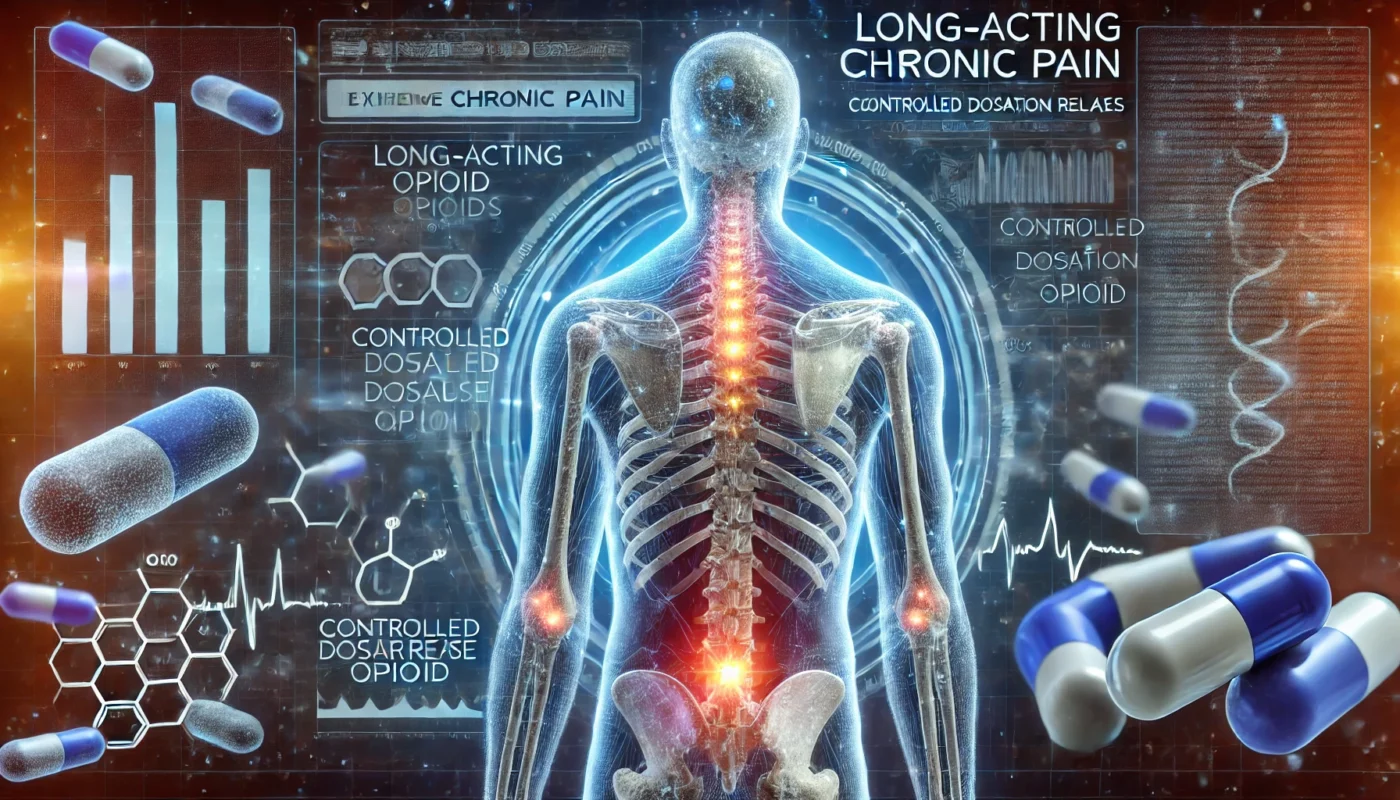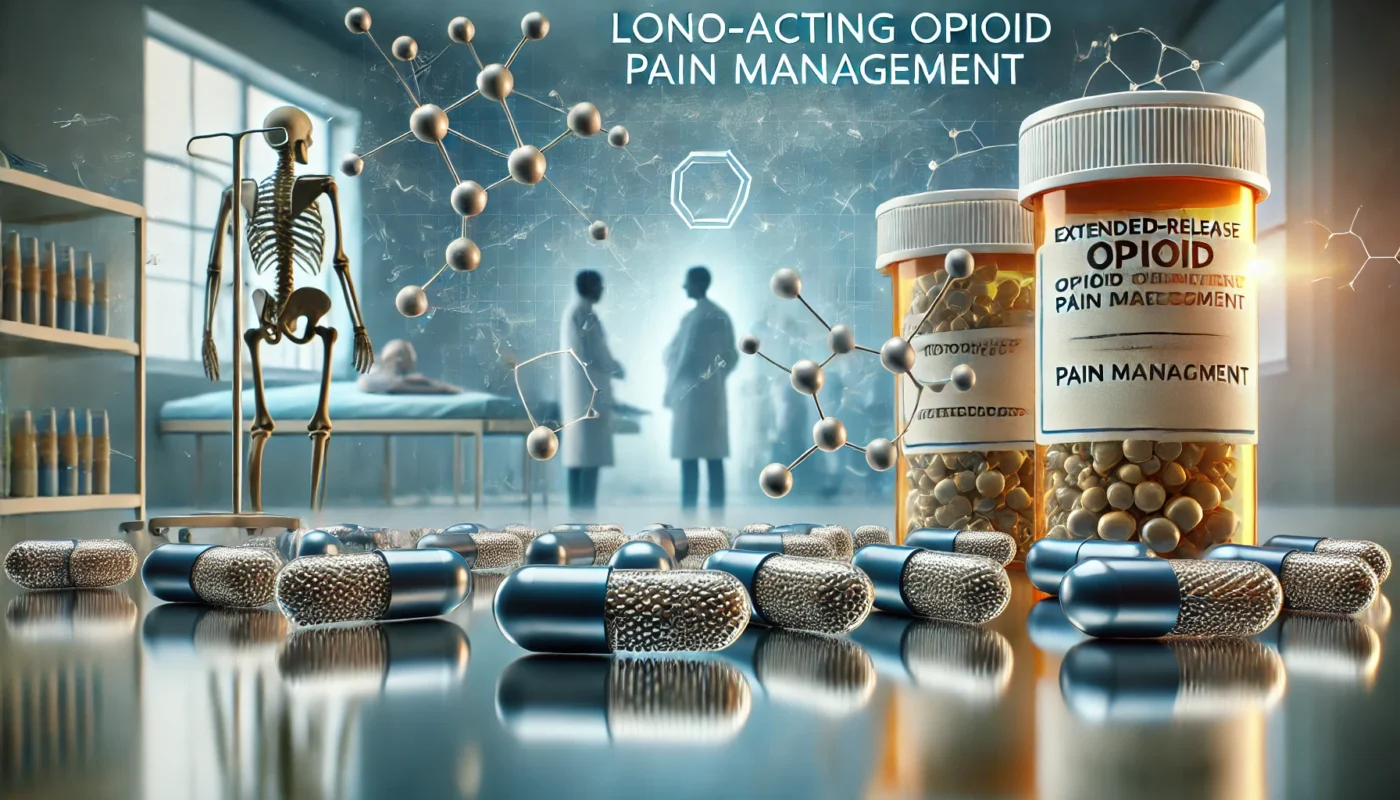In this article, we’ll delve into the role of long-acting opioids in chronic pain relief, exploring their benefits, potential risks, and the importance of a comprehensive approach to pain management.
You may also like: Understanding Long-Term Pain Relief Options
Understanding Chronic Pain and Its Impact
Chronic pain is a persistent condition that affects millions worldwide, often resulting in a diminished quality of life. It can stem from various causes, including injury, surgery, or conditions such as arthritis and fibromyalgia. The physical and emotional toll of chronic pain often necessitates a multifaceted approach to treatment, which may include medication, physical therapy, and lifestyle modifications.
The Prevalence of Chronic Pain
Chronic pain is a widespread health issue, affecting approximately one in five adults globally. It can occur in any part of the body, often leading to significant disability and emotional distress. Understanding its prevalence highlights the need for effective pain management strategies.
Causes of Chronic Pain
Chronic pain can arise from numerous sources, including injuries that fail to heal properly, nerve damage, or underlying health conditions like arthritis, fibromyalgia, and migraines. Each cause may require a different approach to treatment, emphasizing the need for personalized pain management plans.
The Emotional and Psychological Impact
Living with chronic pain can lead to emotional and psychological challenges, such as depression, anxiety, and social isolation. These issues can exacerbate the perception of pain, creating a cycle that can be difficult to break without comprehensive care.
What Are Long Acting Opioids?
Long-acting opioids are a class of medications designed to provide sustained pain relief over an extended period. Unlike short-acting opioids, which are typically used for acute pain and require frequent dosing, long-acting opioids are formulated to release their effects slowly, ensuring more consistent pain control.
Mechanism of Action
Long-acting opioids work by binding to specific receptors in the brain and spinal cord, altering the perception of pain. This binding action helps to modulate pain signals, providing relief over an extended period and reducing the frequency of dosing compared to short-acting opioids.

Differences Between Long-Acting and Short-Acting Opioids
The primary difference lies in their duration of action. Short-acting opioids are designed for quick, temporary relief and often require frequent dosing. In contrast, long-acting opioids release their effects gradually, allowing for sustained relief and potentially improving adherence to treatment regimens.
Safety and Efficacy Considerations
When used appropriately, long-acting opioids can be a safe and effective component of chronic pain management. However, it is crucial to consider factors such as patient history, potential for abuse, and the presence of other medical conditions to ensure their safe use.
The Role of Long Acting Opioids in Pain Management
When considering long-acting opioids as part of a pain management plan, it’s essential to adopt a holistic approach that encompasses both medical and non-medical strategies.

Integrating Medical Interventions
Medical interventions, including the use of long-acting opioids, should be part of a comprehensive pain management strategy. This might also include adjunctive medications, such as antidepressants or anticonvulsants, which can help address different components of pain.
The Role of Physical Therapy
Physical therapy can be a valuable adjunct to opioid therapy, helping to improve mobility, strength, and overall function. A well-designed physical therapy program can enhance the benefits of long-acting opioids by addressing physical limitations and promoting active participation in daily activities.
Psychological Support and Counseling
Psychological support, including counseling and cognitive-behavioral therapy, can help patients cope with the emotional aspects of chronic pain. These therapies can teach coping skills, reduce stress, and improve overall quality of life, complementing the effects of long-acting opioids.
Potential Risks and Considerations
While long-acting opioids can be beneficial, they are not without risks. Understanding these risks is vital for ensuring safe and effective use.
Risk of Dependence and Addiction
One of the primary concerns associated with opioid use is the potential for dependence and addiction. Long-acting opioids, like all opioids, carry this risk, and it is crucial to work closely with healthcare providers to monitor for signs of misuse.
Side Effects and Adverse Reactions
Common side effects of long-acting opioids include drowsiness, constipation, nausea, and dizziness. In some cases, individuals may experience more severe reactions, such as respiratory depression. Thus, it is essential to follow prescribed guidelines and report any adverse effects to a healthcare professional promptly.
The Importance of Regular Monitoring
Regular monitoring and follow-ups with healthcare providers are integral to managing the risks associated with long-acting opioids. This includes routine assessments to evaluate the effectiveness of the medication and make necessary adjustments to the treatment plan.

Practical Tips for Managing Pain with Long Acting Opioids
- Adhere to Prescribed Dosages: Always follow your healthcare provider’s instructions regarding dosage and frequency to minimize risks and maximize efficacy.
- Incorporate Non-Pharmacological Strategies: Engage in regular physical activity, consider mindfulness techniques, and explore other holistic practices to complement your medication regimen.
- Maintain Open Communication with Healthcare Providers: Regularly discuss any concerns or side effects with your healthcare provider to ensure optimal pain management.
- Stay Informed: Educate yourself about your medication and its potential interactions with other treatments or substances.
- Develop a Support System: Lean on family, friends, or support groups to help navigate the challenges of chronic pain management.
Conclusion
Managing chronic pain with long-acting opioids requires a balanced and informed approach. By integrating these medications with holistic practices and lifestyle changes, individuals can achieve more effective and sustainable pain relief. As with any treatment, it is essential to work closely with healthcare providers to tailor a plan that aligns with your unique needs and health goals.
Remember, your journey to managing chronic pain is personal, and finding the right combination of strategies is key to enhancing your quality of life.
Further Reading:
List of Extended-Release and Long-Acting Opioid Products Required to Have an Opioid REMS
New Safety Measures Announced for Extended-release and Long-acting Opioids
New Initiation of Long-Acting Opioids in Long-Stay Nursing Home Residents
Managing Pain, Long Acting Opioids, Chronic Pain, Pain Management, Opioid Therapy, Physical Therapy, Psychological Support, Pain Relief, Dependence and Addiction, Side Effects, Holistic Approach, Healthcare Providers, Quality of Life, Non-Pharmacological Strategies
Important Note: The information contained in this article is for general informational purposes only, and should not be construed as health or medical advice, nor is it intended to diagnose, prevent, treat, or cure any disease or health condition. Before embarking on any diet, fitness regimen, or program of nutritional supplementation, it is advisable to consult your healthcare professional in order to determine its safety and probable efficacy in terms of your individual state of health.
Regarding Nutritional Supplements Or Other Non-Prescription Health Products: If any nutritional supplements or other non-prescription health products are mentioned in the foregoing article, any claims or statements made about them have not been evaluated by the U.S. Food and Drug Administration, and such nutritional supplements or other health products are not intended to diagnose, treat, cure, or prevent any disease.

